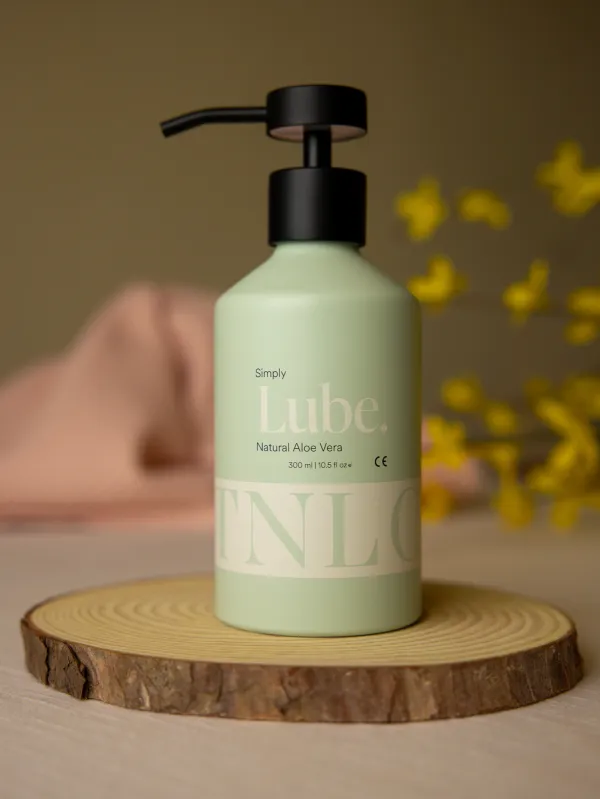The Joys Of Cleaning Ecologically
The average commercial cleaning product is made up of 80% water and 20% chemicals. But how are these chemicals affecting our health?

Cleaning is an endless cycle which most of us regularly do, which eats 10 whole days a year. What I am not suggesting is you ditch cleaning because of saving time. Our chores have created a need for cleaning products, with liquids of every colour, scent, and use case. However, the average commercial cleaning product is made up of 80% water and 20% chemicals. But how are these chemicals affecting our health?
Endocrine disrupting chemicals are a group of pollutants that can impact the endocrine system and lead to diseases and dysfunctions across the lifespan of organisms. These chemicals can be found in children's toys, as well as personal care products and household cleaning products. Telma et al. wrote about endocrine disrupting chemicals, explaining that each year, hundreds of new chemicals are produced and released onto the market without being tested. This means their effect on our bodies is unknown. Though, the paper says that permanent exposure to those chemicals may intensify or even become the main cause for the development of diseases such as type 2 diabetes, obesity, cardiovascular diseases, and certain types of cancer.
The claim could be supported by a study which was published in Chemosphere. The study concluded that exposure to cleaning products has been associated with harm to the respiratory system, neurotoxicity, harm to the reproductive system, and elevated risk of cancer, with the greatest adverse impacts for workers exposed in occupational settings.
Is it only cleaners affected?
A study published in Plos One explored common household chemicals and allergy risks in pre-school age children. Their study included 198 children with asthma and allergy and 202 healthy controls. The study explained that air samples were collected in the room where the child slept, which were analysed for the levels of eight classes of VOCs.
The study found that a natural-log unit of summed propylene glycol and glycol ethers (PGEs) in bedroom air was associated with 1.5-fold greater likelihood of being a case, 1.5-fold greater likelihood of asthma, 2.8-fold greater likelihood of rhinitis, and 1.6-fold greater likelihood of eczema.
The study concluded those findings after they have accounted for gender, second hand smoke, allergies in both parents, wet cleaning with chemical agents, construction period of the building, limonene, cat and dog allergens, butyl benzyl phthalate (BBzP), and di(2-ethylhexyl)phthalate (DEHP).
The EPA says that acute (short-term) exposure to high levels of the glycol ethers in humans results in narcosis, pulmonary edema, and severe liver and kidney damage. With chronic (long-term) exposure to the glycol ethers in humans may result in neurological and blood effects, including fatigue, nausea, tremor, and anemia.
Blog post continues after the drop-down menus
Where is Propylene glycol found?
Propylene glycol is used as a softening agent and preservative. It can be found in food as well as engine coolants, aeroplane deicers, enamels, paints, varnishes, and polyurethane cushions.
What are glycol ethers?
EPA says that glycol ethers are used as solvents for resins, lacquers, paints, varnishes, gum, perfume, dyes, inks, as a constituent of paints and pastes, cleaning compounds, liquid soaps, cosmetics, and hydraulic fluids.
But how, you may ask?
As well as chemicals, some products we use to clean our homes, such as detergents and furniture polish, contain chemicals called volatile organic compounds (VOCs). This refers to chemicals which start off as a solid or liquid, but easily evaporate into vapours or gases. An example of these are acetone, benzene, and formaldehyde. When products containing VOCs are used, or even stored, they evaporate into the air and enter your bloodstream through inhalation. Research suggests VOCs can irritate the lungs, particularly in children.
Citing the first study, published in Chemosphere, the researchers explored 28 cleaning products and 2 air fresheners. The study found that a total of 530 unique VOCs (volatile organic compounds) were quantified, with 205 additional VOCs detected below the limits of quantification. The researchers said of the quantifiable VOCs, 193 were considered hazardous according to either the California's Department of Toxic Substances Control Candidate Chemicals List or the European Chemical Agency's Classification and Labelling Inventory.
What Are Volatile organic compounds?
The United States Environmental Protection Agency says volatile organic compounds (VOCs) are emitted as gases from certain solids or liquids. VOCs include various chemicals, some of which may have short- and long-term adverse health effects. Concentrations of many VOCs are consistently higher indoors (up to ten times higher) than outdoors.
Research involving more than 6,200 people over 20 years, with the average age of 34, showed that cleaners have a 40% higher risk of developing asthma than others. They concluded that lung function declines in those working as cleaners or regularly using cleaning products at home were comparable to smoking 20 cigarettes a day over 10 to 20 years.

The Bergen study found that cleaning spray were the main culprit affecting lung function, due to small particulates remaining in the air for several hours after cleaning. This makes sense as some cleaning products leave a lingering scent which could be still ingested. According to Professor Cecilie Svanes, from the University of Bergen’s Department of Global Public Health and Primary Care, these small particles can travel deep into the lungs, causing damage and infections.
However, a European study from 2009 showed that cleaning in the home with sprays has a significant impact on respiratory health, showcasing that it is not just professional cleaners being exposed. The study 3,503 people across 10 countries who clean their homes and were free of asthma at baseline. The paper says that the frequency of use of 15 types of cleaning products was obtained in a face-to-face interview at follow-up. They studied the incidence of asthma defined as physician diagnosis and as symptoms or medication usage at follow-up. Associations between asthma and the use of cleaning products were evaluated using multivariable Cox proportional hazards or log-binomial regression analysis. The use of cleaning sprays at least weekly (42% of participants) was associated with the incidence of asthma symptoms or medication.
Though it is not just household cleaning products as The New York Times reported, they stated that fragrances in soaps and shampoos can affect fertility. Susmita Mukherjee et al. (2024) wrote that “personal care products such as deodorants, shampoo, and cosmetics products contain many chemicals which are commonly referred to as chemical pollutants. These chemicals can be a threat to humans as well as to our environment and nature.”
How can we reduce the risk to our health?
To avoid cleaning products that contribute to air pollution, consider some of the following options:
- DIY Cleaning Sprays: Look for recipes online, or use simple household ingredients like vinegar, baking soda and water to clean your home. Avoid commercial air fresheners all together, which can release multiple toxic chemicals, instead try making your own. Some people use essential oils.
- Avoid chemical-heavy products: Products that are labelled as hypoallergenic, often have lower levels of VOCs. Check the label on the side or back of the product, which lists the ingredients inside. If there are ingredients you do not understand, consider searching the internet to learn more.
- Ventilate your home: Try to open the windows for 10 minutes or even longer. Personally, I open my bedroom windows when I wake up and close them after I have had breakfast.
- Make friends with plants: Some plants can remove benzene, formaldehyde, trichloroethylene, and xylene from the air
When making your own sprays, always test the product before using it on a wide area. Furthermore, some essential oils can react if they contact our skin or our pets. Likewise, acids and alkalis can react with household surfaces, such as using lemons on marble worktops.
Final Words
Overall, the joys of cleaning ecologically involve knowing that you have a more sustainable cleaning routine which is better for the planet and can provide a healthier personal living space. You may find that making your own cleaning products saves clutter under your sink.
Window and Mirror Cleaner Recipe

Where to Use | Mirrors and windows
Ingredients | Water, white vinegar and washing up liquid
Equipment | Measuring jug with labelled increments and an empty 500ml spray bottle.
1) Find or empty 500ml spray bottle, making sure it is clean from it former products housed in it.
2) Measure 250ml of water in a jug and pour it into the open bottle.
3) Next, add 100ml of white vinegar to the open bottle filled with water.
4) Add a few drops of your current washing up liquid.




